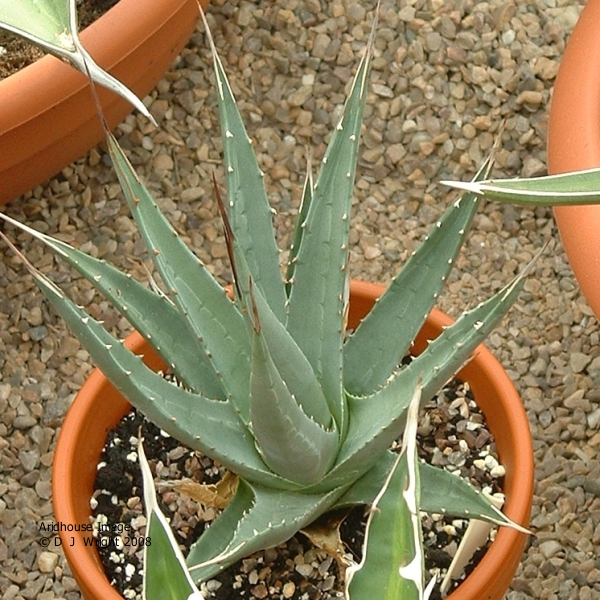
Description.
Small, cespitose, light grayish to yellow green, rather compact rosettes 18-30 cm tall, 25-40 cm broad with 70 80 leaves. Leaves mostly 15-30 x 1.5-3 cm, linear lanceolate, stiff, straight or falcate or upcurving, plane to concave above, convex below; teeth brown-ringed around bases, blunt, thick, light gray, the larger mostly 2-4 mm long, 1-2.5 cm apart, detachable; spine 20-40 mm long, acicular, decurrent for 1-3 cm, openly grooved above, light gray.
It's natural habitat is in Northwest Arizona on limestone forming extensive populations on the open stony slopes.
Nevadensis is like var. utahensis but differs with smaller rosettes, 15-25 cm tall; leaves frequently bluish gray glaucous, generally with larger teeth; spines elongated especially in proportion to the fleshy part of the leaf. Inflorescence as for the species with both simpler spicate forms and paniculate forms. The main core of nevadensis exhibits a morphological difference from the general populations in the eastern areas of the species, but there are transitional forms between the two.
Eborispina, when well developed is very distinctive, the large, elongate, ivory white spines making it easily recognizable and much sought after by collectors.
Kaibabensis usually single, with bright green, numerous leaves on a short trunk a maturity. Leaves mostly 30-50 x 3-5 cm, lanceolate, long-acuminate, light green; teeth 3-5 mm long 1-4 cm apart, blunt, deltoid, little curved, grayish to white; spine stout, subulate, 3-4 c long, flat to hollowed above, roundly angled below, gray to white, long decurrent to upper teeth.


